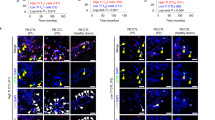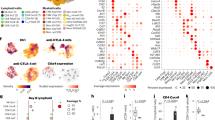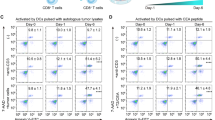Abstract
The Fas/FasL system transmits intracellular apoptotic signaling, inducing cell apoptosis. However, Fas signaling also exerts non-apoptotic functions in addition to inducing tumor cell apoptosis. For example, Fas signaling induces lung cancer tumor cells to produce prostaglandin E2 (PGE2) and recruit myeloid-derived suppressor cells (MDSCs). Activated cytotoxic T lymphocytes (CTLs) induce and express high levels of FasL, but the effects of Fas activation initiated by FasL in CTLs on apoptosis-resistant tumor cells remain largely unclear. We purified activated CD8+ T cells from OT-1 mice, evaluated the regulatory effects of Fas activation on tumor cell escape and investigated the relevant mechanisms. We found that CTLs induced tumor cells to secrete PGE2 and increase tumor cell-mediated chemoattraction of MDSCs via Fas signaling, which was favorable to tumor growth. Our results indicate that CTLs may participate in the tumor immune evasion process. To the best of our knowledge, this is a novel mechanism by which CTLs play a role in tumor escape. Our findings implicate a strategy to enhance the antitumor immune response via reduction of negative immune responses to tumors promoted by CTLs through Fas signaling.
This is a preview of subscription content, access via your institution
Access options
Subscribe to this journal
Receive 12 digital issues and online access to articles
$119.00 per year
only $9.92 per issue
Buy this article
- Purchase on Springer Link
- Instant access to full article PDF
Prices may be subject to local taxes which are calculated during checkout






Similar content being viewed by others
References
Bronte V, Kasic T, Gri G, Gallana K, Borsellino G, Marigo I et al. Boosting antitumor responses of T lymphocytes infiltrating human prostate cancers. J Exp Med 2005; 201: 1257–1268.
Olurinde MO, Shen CH, Drake A, Bai A, Chen J . Persistence of tumor-infiltrating CD8 T cells is tumor-dependent but antigen-independent. Cell Mol Immunol 2011; 8: 415–423.
Caldwell SA, Ryan MH, McDuffie E, Abrams SI . The Fas/Fas ligand pathway is important for optimal tumor regression in a mouse model of CTL adoptive immunotherapy of experimental CMS4 lung metastases. J Immunol 2003; 171: 2402–2412.
Cai Z, Yang F, Yu L, Yu Z, Jiang L, Wang Q et al. Activated T cell exosomes promote tumor invasion via Fas signaling pathway. J Immunol 2012; 188: 5954–5961.
Scholz M, Cinatl J . Fas/FasL interaction: a novel immune therapy approach with immobilized biologicals. Med Res Rev 2005; 25: 331–342.
Nijkamp MW, Hoogwater FJ, Govaert KM, Steller EJ, Verheem A, Kranenburg O et al. A role for CD95 signaling in ischemia/reperfusion-induced invasion and outgrowth of colorectal micrometastases in mouse liver. J Surg Oncol 2011; 104: 198–204.
Letellier E, Kumar S, Sancho-Martinez I, Krauth S, Funke-Kaiser A, Laudenklos S et al. CD95-ligand on peripheral myeloid cells activates Syk kinase to trigger their recruitment to the inflammatory site. Immunity 2010; 32: 240–252.
Kleber S, Sancho-Martinez I, Wiestler B, Beisel A, Gieffers C, Hill O et al. Yes and PI3K bind CD95 to signal invasion of glioblastoma. Cancer Cell 2008; 13: 235–248.
Barnhart BC, Legembre P, Pietras E, Bubici C, Franzoso G, Peter ME . CD95 ligand induces motility and invasiveness of apoptosis-resistant tumor cells. EMBO J 2004; 23: 3175–3185.
Li H, Fan X, Stoicov C, Liu JH, Zubair S, Tsai E et al. Human and mouse colon cancer utilizes CD95 signaling for local growth and metastatic spread to liver. Gastroenterology 2009; 137: 934–944.
Xie Y, Zhang H, Li W, Deng Y, Munegowda MA, Chibbar R et al. Dendritic cells recruit T cell exosomes via exosomal LFA-1 leading to inhibition of CD8+ CTL responses through downregulation of peptide/MHC class I and Fas ligand-mediated cytotoxicity. J Immunol 2010; 185: 5268–5278.
Zhang Y, Liu Q, Zhang M, Yu Y, Liu X, Cao X . Fas signal promotes lung cancer growth by recruiting myeloid-derived suppressor cells via cancer cell-derived PGE2. J Immunol 2009; 182: 3801–3808.
Obermajer N, Wong JL, Edwards RP, Odunsi K, Moysich K, Kalinski P . PGE2-driven induction and maintenance of cancer-associated myeloid-derived suppressor cells. Immunol Invest 2014; 41: 635–657.
Hefeneider SH, Conlon PJ, Henney CS, Gillis S . In vivo interleukin 2 administration augments the generation of alloreactive cytolytic T lymphocytes and resident natural killer cells. J Immunol 1983; 130: 222–227.
Kajino K, Kajino Y, Greene MI . Fas- and perforin-independent mechanism of cytotoxic T lymphocyte. Immunol Res 1998; 17: 89–93.
Hishii M, Kurnick JT, Ramirez-Montagut T, Pandolfi F . Studies of the mechanism of cytolysis by tumour-infiltrating lymphocytes. Clin Exp Immunol 1999; 116: 388–394.
Monu NR, Frey AB . Myeloid-derived suppressor cells and anti-tumor T cells: a complex relationship. Immunol Invest 2012; 41: 595–613.
Wang T, Niu G, Kortylewski M, Burdelya L, Shain K, Zhang S et al. Regulation of the innate and adaptive immune responses by Stat-3 signaling in tumor cells. Nat Med 2004; 10: 48–54.
Condamine T, Gabrilovich DI . Molecular mechanisms regulating myeloid-derived suppressor cell differentiation and function. Trends Immunol 2011; 32: 19–25.
Gabrilovich DI, Ostrand-Rosenberg S, Bronte V . Coordinated regulation of myeloid cells by tumours. Nat Rev Immunol 2012; 12: 253–268.
Hoechst B, Voigtlaender T, Ormandy L, Gamrekelashvili J, Zhao F, Wedemeyer H et al. Myeloid derived suppressor cells inhibit natural killer cells in patients with hepatocellular carcinoma via the NKp30 receptor. Hepatology 2009; 50: 799–807.
Nickeleit I, Zender S, Sasse F, Geffers R, Brandes G, Sorensen I et al. Argyrin a reveals a critical role for the tumor suppressor protein p27(kip1) in mediating antitumor activities in response to proteasome inhibition. Cancer Cell 2008; 14: 23–35.
Marigo I, Dolcetti L, Serafini P, Zanovello P, Bronte V . Tumor-induced tolerance and immune suppression by myeloid derived suppressor cells. Immunol Rev 2008; 222: 162–179.
Danna EA, Sinha P, Gilbert M, Clements VK, Pulaski BA, Ostrand-Rosenberg S . Surgical removal of primary tumor reverses tumor-induced immunosuppression despite the presence of metastatic disease. Cancer Res 2004; 64: 2205–2211.
Almand B, Clark JI, Nikitina E, van Beynen J, English NR, Knight SC et al. Increased production of immature myeloid cells in cancer patients: a mechanism of immunosuppression in cancer. J Immunol 2001; 166: 678–689.
Dalyot-Herman N, Bathe OF, Malek TR . Reversal of CD8+ T cell ignorance and induction of anti-tumor immunity by peptide-pulsed APC. J Immunol 2000; 165: 6731–6737.
Yu L, Yang F, Jiang L, Chen Y, Wang K, Xu F et al. Exosomes with membrane-associated TGF-beta1 from gene-modified dendritic cells inhibit murine EAE independently of MHC restriction. Eur J Immunol 2013; 43: 2461–2472.
Wajant H, Pfizenmaier K, Scheurich P . Non-apoptotic Fas signaling. Cytokine Growth Factor Rev 2003; 14: 53–66.
Weinberg JB . Nitric oxide synthase 2 and cyclooxygenase 2 interactions in inflammation. Immunol Res 2000; 22: 319–341.
Guo Z, Zhang M, An H, Chen W, Liu S, Guo J et al. Fas ligation induces IL-1beta-dependent maturation and IL-1beta-independent survival of dendritic cells: different roles of ERK and NF-kappaB signaling pathways. Blood 2003; 102: 4441–4447.
Guo Z, Zhang M, Tang H, Cao X . Fas signal links innate and adaptive immunity by promoting dendritic-cell secretion of CC and CXC chemokines. Blood 2005; 106: 2033–2041.
Lee SM, Kim EJ, Suk K, Lee WH . Stimulation of FasL induces production of proinflammatory mediators through activation of mitogen-activated protein kinases and nuclear factor-κB in THP-1 cells. Inflammation 2010; 35: 1–10.
Chen L, Park SM, Tumanov AV, Hau A, Sawada K, Feig C et al. CD95 promotes tumour growth. Nature 2010; 465: 492–496.
Desbarats J, Birge RB, Mimouni-Rongy M, Weinstein DE, Palerme JS, Newell MK . Fas engagement induces neurite growth through ERK activation and p35 upregulation. Nat Cell Biol 2003; 5: 118–125.
Toyoshima F, Moriguchi T, Nishida E . Fas induces cytoplasmic apoptotic responses and activation of the MKK7–JNK/SAPK and MKK6-p38 pathways independent of CPP32-like proteases. J Cell Biol 1997; 139: 1005–1015.
Yu H, Kortylewski M, Pardoll D . Crosstalk between cancer and immune cells: role of STAT3 in the tumour microenvironment. Nat Rev Immunol 2007; 7: 41–51.
Babiak A, Steinhauser M, Gotz M, Herbst C, Dohner H, Greiner J . Frequent T cell responses against immunogenic targets in lung cancer patients for targeted immunotherapy. Oncol Rep 2014; 31: 384–390.
Tian H, Chen GH, Xu Y, Qiao M, Liu HW, Wu DP . Current research advance on cellular immunotherapy for leukemia—review. Zhongguo Shi Yan Xue Ye Xue Za Zhi 2013; 21: 1326–1330. Chinese.
Hodge JW, Kwilas A, Ardiani A, Gameiro SR . Attacking malignant cells that survive therapy: exploiting immunogenic modulation. Oncoimmunology 2013; 2: e26937.
Hosoi A, Matsushita H, Shimizu K, Fujii SI, Ueha S, Abe J et al. Adoptive cytotoxic T lymphocyte therapy triggers a counter-regulatory immunosuppressive mechanism via recruitment of myeloid-derived suppressor cells. Int J Cancer 2014; 134: 1810–1822.
Obermajer N, Muthuswamy R, Lesnock J, Edwards RP, Kalinski P . Positive feedback between PGE2 and COX2 redirects the differentiation of human dendritic cells toward stable myeloid-derived suppressor cells. Blood 2011; 118: 5498–5505.
Karavitis J, Hix LM, Shi YH, Schultz RF, Khazaie K, Zhang M . Regulation of COX2 expression in mouse mammary tumor cells controls bone metastasis and PGE2-induction of regulatory T cell migration. PLoS ONE 2012; 7: e46342.
Karavitis J, Zhang M . COX2 regulation of breast cancer bone metastasis. Oncoimmunology 2013; 2: e23129.
Sato T, Irie S, Kitada S, Reed JC . FAP-1: a protein tyrosine phosphatase that associates with Fas. Science 1995; 268: 411–415.
Owen-Schaub LB, Radinsky R, Kruzel E, Berry K, Yonehara S . Anti-Fas on nonhematopoietic tumors: levels of Fas/APO-1 and bcl-2 are not predictive of biological responsiveness. Cancer Res 1994; 54: 1580–1586.
Finn OJ . Cancer vaccines: between the idea and the reality. Nat Rev Immunol 2003; 3: 630–641.
Yang R, Xu D, Zhang A, Gruber A . Immature dendritic cells kill ovarian carcinoma cells by a FAS/FASL pathway, enabling them to sensitize tumor-specific CTLs. Int J Cancer 2001; 94: 407–413.
Sugita J, Ohtani H, Mizoi T, Saito K, Shiiba K, Sasaki I et al. Close association between Fas ligand (FasL; CD95L)-positive tumor-associated macrophages and apoptotic cancer cells along invasive margin of colorectal carcinoma: a proposal on tumor-host interactions. Jpn J Cancer Res 2002; 93: 320–328.
Acknowledgements
The work was supported by the Specialized Research Fund for the Chinese National 973 Project (2013CB530502), the Doctoral Program of Higher Education of China (20110101110105), the Project of the Chinese National Nature Science Foundation (31370902, 31070795, 31270944), the Projects in Science and Technology Plan of Zhejiang Province (013C33G2010434) of China, the National Key Science and Technology Specific Project of China (2012ZX10002006), the National High Technology Research and Development Program (2012AA020900), and the Project of the Chinese National Natural Science Fund Committee for Talent Cultivation (J1103603).
Author information
Authors and Affiliations
Rights and permissions
About this article
Cite this article
Yang, F., Wei, Y., Cai, Z. et al. Activated cytotoxic lymphocytes promote tumor progression by increasing the ability of 3LL tumor cells to mediate MDSC chemoattraction via Fas signaling. Cell Mol Immunol 12, 66–76 (2015). https://doi.org/10.1038/cmi.2014.21
Received:
Revised:
Accepted:
Published:
Issue Date:
DOI: https://doi.org/10.1038/cmi.2014.21
Keywords
This article is cited by
-
Rise of the natural red pigment ‘prodigiosin’ as an immunomodulator in cancer
Cancer Cell International (2022)
-
Regional infusion of a class C TLR9 agonist enhances liver tumor microenvironment reprogramming and MDSC reduction to improve responsiveness to systemic checkpoint inhibition
Cancer Gene Therapy (2022)
-
STAT3 inhibition induces Bax-dependent apoptosis in liver tumor myeloid-derived suppressor cells
Oncogene (2019)



